Search Result
Results for "
plasma metabolite
" in MedChemExpress (MCE) Product Catalog:
10
Isotope-Labeled Compounds
| Cat. No. |
Product Name |
Target |
Research Areas |
Chemical Structure |
-
- HY-12388A
-
|
Desmethylclomipramine hydrochloride
|
Drug Metabolite
|
Neurological Disease
|
|
N-Desmethyl Clomipramine hydrochloride (Desmethylclomipramine hydrochloride) is a primary plasma N-desmethyl metabolite of Clomipramine. Clomipramine is a tricyclic antidepressant .
|
-
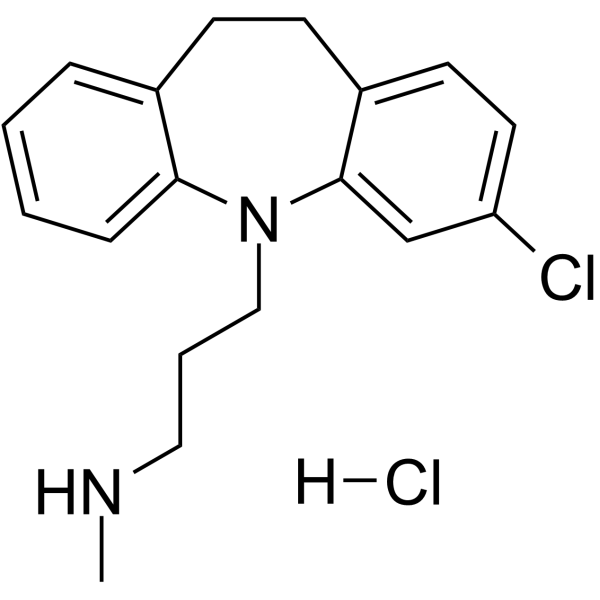
-
- HY-12388AS
-
|
Desmethylclomipramine D3 hydrochloride
|
Drug Metabolite
|
Neurological Disease
|
|
N-Desmethyl Clomipramine-d3 (hydrochloride) is the deuterium labeled N-Desmethyl Clomipramine. N-Desmethyl Clomipramine hydrochloride (Desmethylclomipramine hydrochloride) is a primary plasma N-desmethyl metabolite of Clomipramine[1]
|
-

-
- HY-113161
-
|
|
Endogenous Metabolite
|
Cancer
|
|
L-Octanoylcarnitine is a plasma metabolite and a physiologically active form of octanoylcarnitine. L-Octanoylcarnitine can be used for the research of breast cancer .
|
-
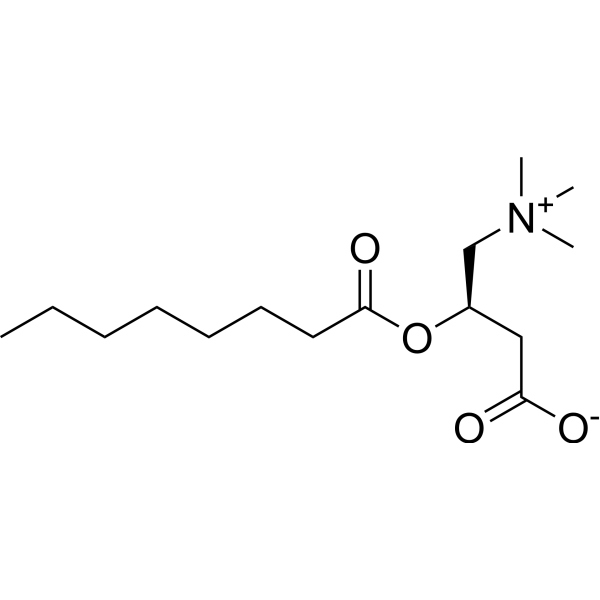
-
- HY-W354498
-
|
|
Endogenous Metabolite
|
Cancer
|
|
L-Octanoylcarnitine hydrochloride is a plasma metabolite and a physiologically active form of octanoylcarnitine. L-Octanoylcarnitine hydrochloride can be used for the research of breast cancer .
|
-
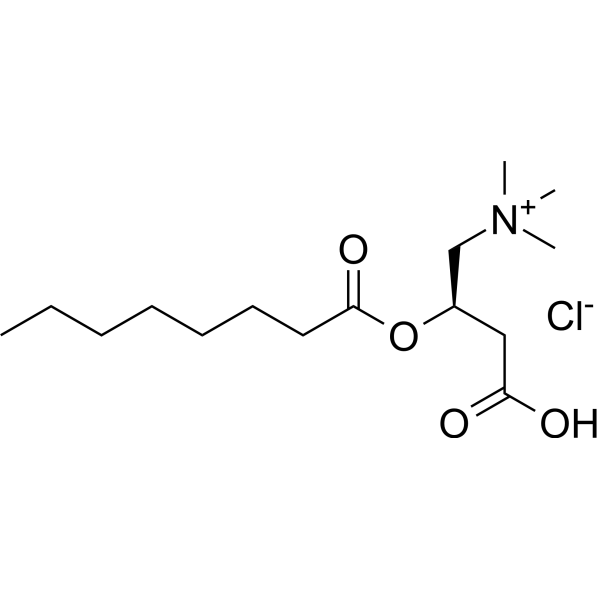
-
- HY-113161S
-
|
|
Isotope-Labeled Compounds
|
Others
|
|
L-Octanoylcarnitine-d3 is the deuterium-labeled L-Octanoylcarnitine (HY-113161). L-Octanoylcarnitine-d3 is a plasma metabolite and a physiologically active form of octanoylcarnitine. L-Octanoylcarnitine-d3 can be used for the research of breast cancer .
|
-
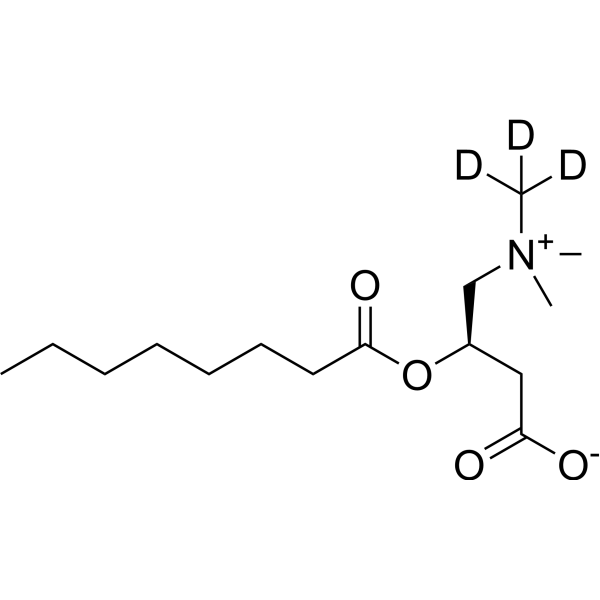
-
- HY-I0177
-
|
|
Drug Metabolite
|
Others
|
|
Vilazodone carboxylic acid is a vilazodone metabolite observed in both urine (major) and plasma (minor) .
|
-
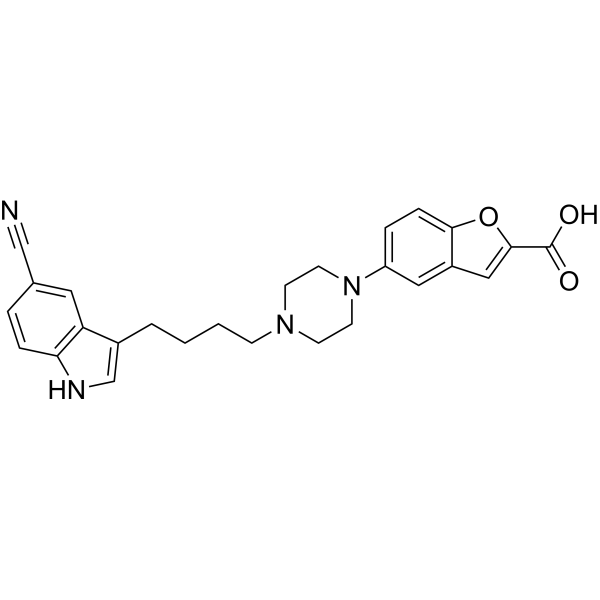
-
- HY-N8210
-
|
|
Drug Metabolite
|
Others
|
|
Homoeriodictyol is a flavonoid metabolite of Eriocitrin in plasma and urine. Eriocitrin is a strong antioxidant agent .
|
-

-
- HY-Y0202
-
|
Catecholcarboxylic acid; NSC 27435
|
Endogenous Metabolite
|
Others
|
|
Pyrocatechuic acid is a normal human benzoic acid metabolite found in plasma, and has increased levels after aspirin ingestion.
|
-
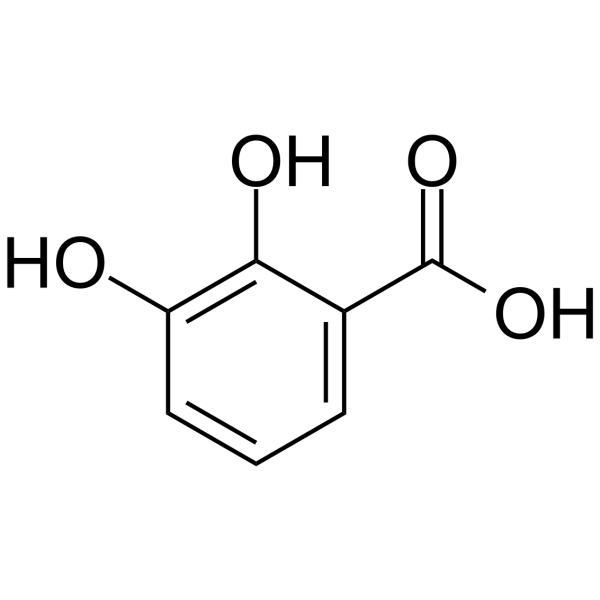
-
- HY-135174
-
-
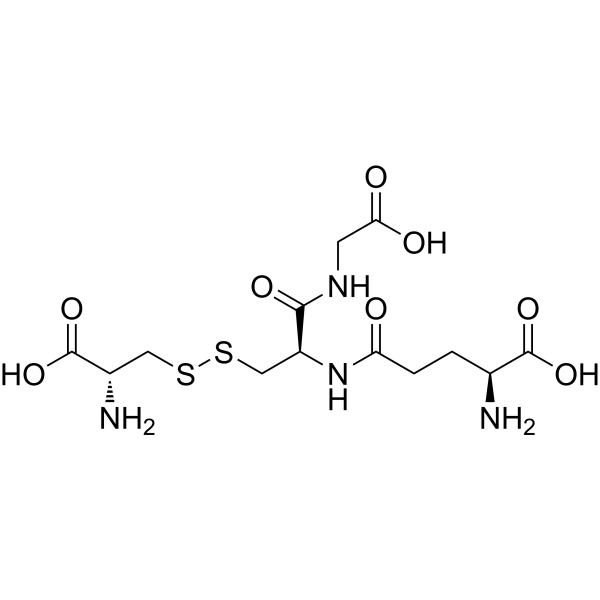
-
- HY-113168
-
|
|
Endogenous Metabolite
|
Others
|
|
Butyrylcarnitine is a metabolite in plasma, acts as a biomarker to improve the diagnosis and prognosis of heart failure, and is indicative of anomalous lipid and energy metabolism.
|
-
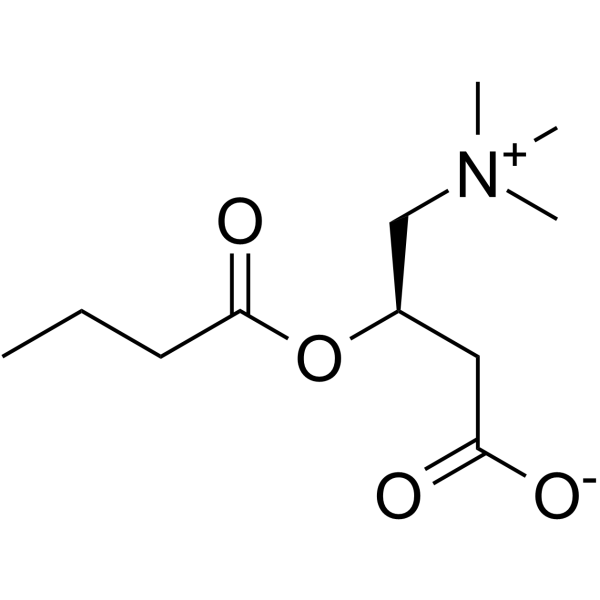
-
- HY-N0873A
-
|
|
Drug Metabolite
|
Others
|
|
Iso-Sagittatoside A is the metabolite of effective Erxian Decoction (EXD, a Chinese medicine prescription for menopausal syndromes) in rat plasma .
|
-
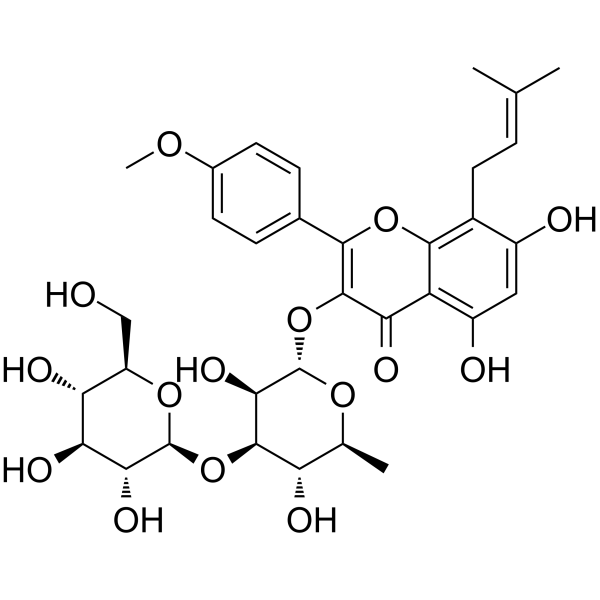
-
- HY-122317
-
|
|
Drug Metabolite
|
Others
|
|
Menthol glucuronide, a metabolite of Menthol (HY-N1369), is a plasma and urine biomarker of acute Menthol inhalation .
|
-
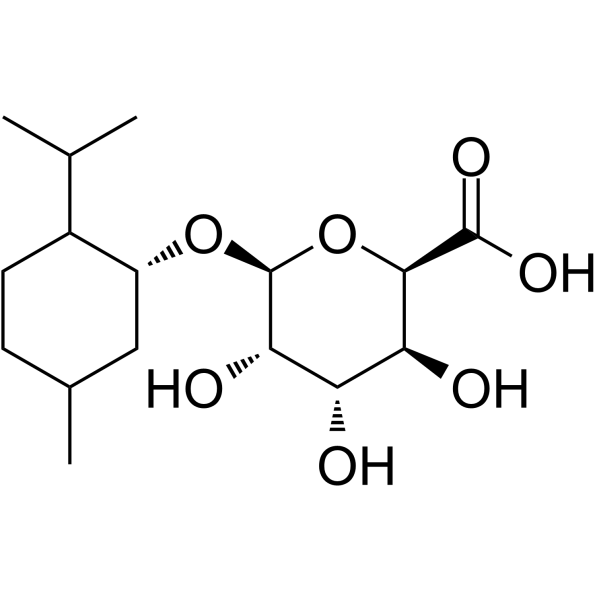
-
- HY-W004206
-
|
4-Methoxyphenylacetic acid
|
Endogenous Metabolite
|
Cancer
|
|
2-(4-Methoxyphenyl)acetic acid is a plasma metabolite, with high sensitivity and specificity value as a biomarker for discriminating between NSCLC and healthy controls.
|
-
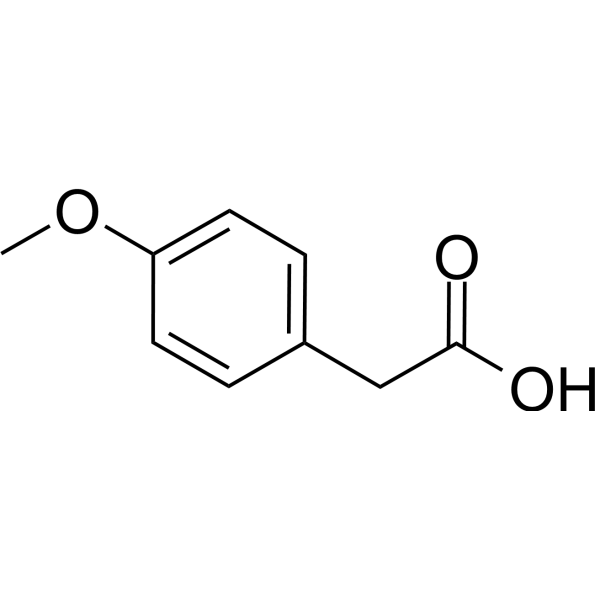
-
- HY-W011239
-
|
Oxfendazole sulfone; FBZ-SO2
|
Parasite
|
Infection
|
|
Fenbendazole sulfone (Oxfendazole sulfone;FBZ-SO2) is a minor metabolite of Fenbendazole in plasma and is a benzimidazole anthelmintic agent .
|
-
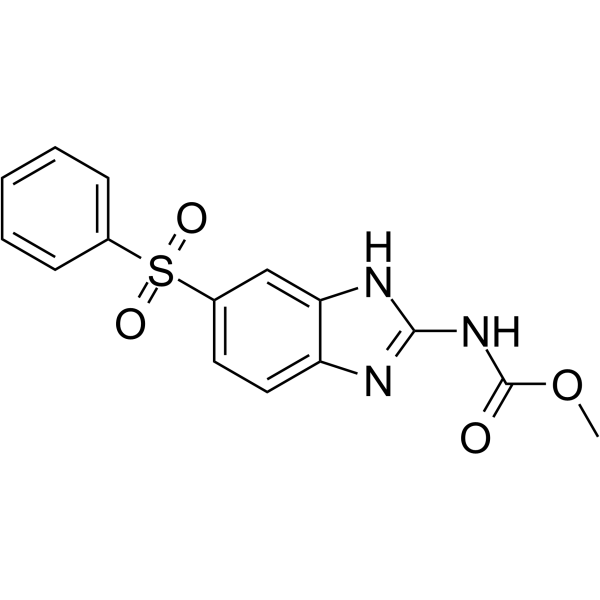
-
- HY-N11429
-
|
|
Others
|
Metabolic Disease
Cancer
|
|
Glycochenodeoxycholic acid 3-glucuronide is a type of steroid glucuronide and a plasma metabolite that can be used for biomarker research in diabetes and hepatocellular carcinoma (HCC) .
|
-
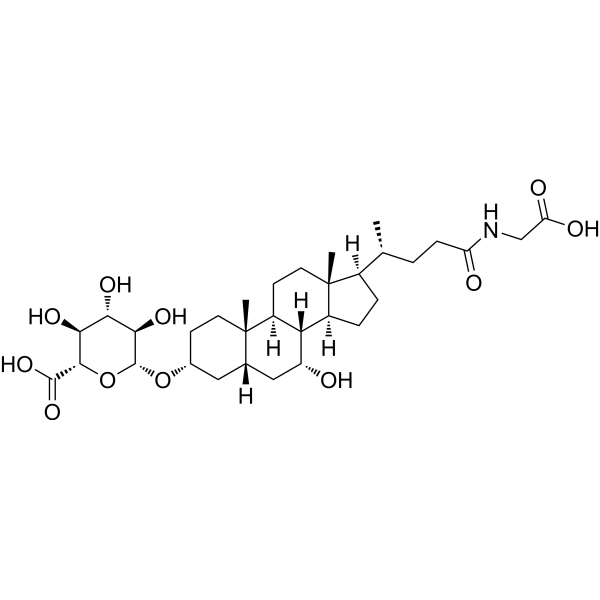
-
- HY-N4173
-
|
|
Drug Metabolite
|
Metabolic Disease
|
|
8-Oxoepiberberine is an alkaloid metabolite in the plasma after oral administration of Zuojin formula, a traditional chinese medicine used to treat gastrointestinal disease .
|
-
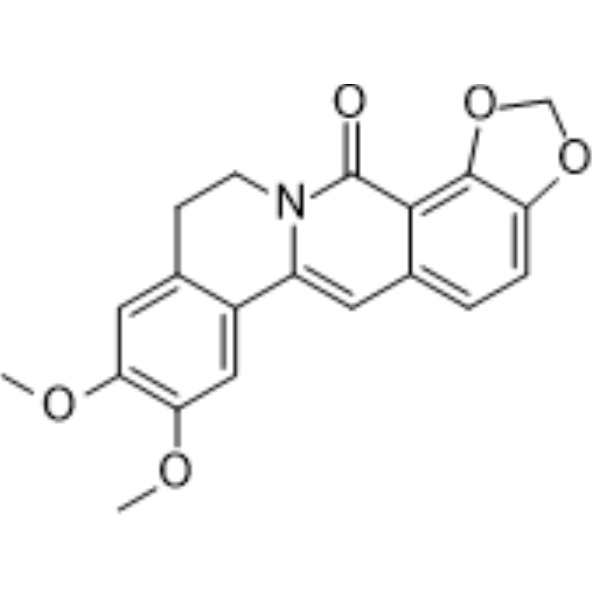
-
- HY-70002A
-
|
N-desmethyl MDV 3100
|
Androgen Receptor
|
Cancer
|
|
N-desmethyl Enzalutamide is the active metabolite of Enzalutamide.N-desmethyl Enzalutamide is the active metabolite of Enzalutamide. N-desmethyl Enzalutamide demonstrates primary and secondary pharmacodynamics of similar potency to Enzalutamide and circulates at approximately the same plasma concentrations as enzalutamide .
|
-
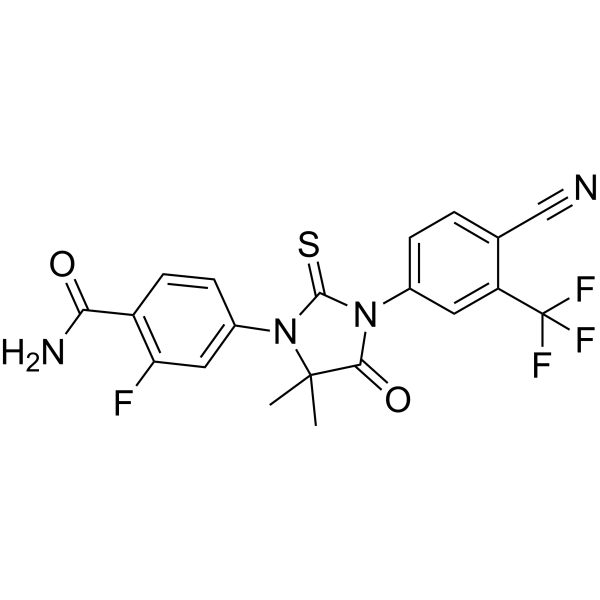
-
- HY-135245
-
|
SCH 488128; Ezetimibe hydroxy β-D-Glucuronide
|
Drug Metabolite
|
Cardiovascular Disease
|
|
Ezetimibe hydroxy glucuronide (SCH 488128) is a trace metabolite detected in dog and human plasma samples after oral administration of Ezetimibe (HY-17376) .
|
-

-
- HY-114297
-
|
|
Endogenous Metabolite
|
Others
|
|
Zymosterol is a Cholesterol (HY-N0322) biosynthesis metabolite. Zymosterol, a precursor of Cholesterol, is found mostly in the plasma membrane. Zymosterol circulates within the cell .
|
-

-
- HY-W042039
-
|
|
Calcium Channel
|
Cardiovascular Disease
|
|
Methyl homoveratrate, a metabolite of RWJ-26240 in vivo, can be identified in plasma, urine and faecal extract. McN5691 (RWJ-26240) is a voltage-sensitive calcium channel blocker .
|
-
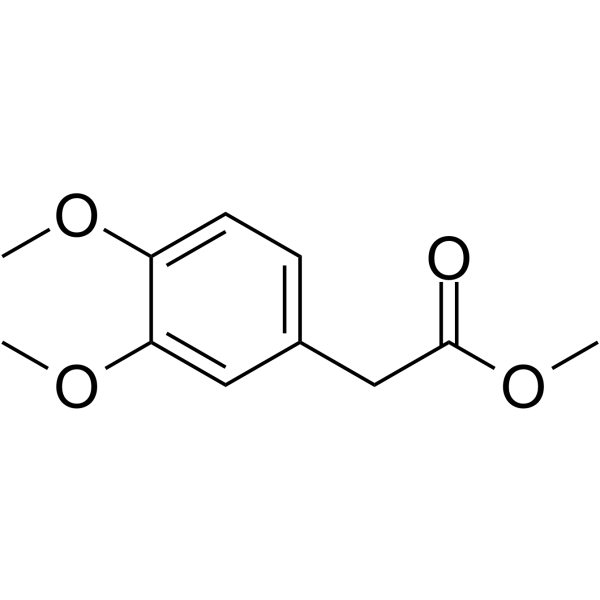
-
- HY-N6910
-
|
|
Others
|
Metabolic Disease
|
|
Pseudolaric Acid C2, a diterpenoid isolated from Pseudolarix kaempferi, is identified as the specific metabolite of Pseudolaric acid B in plasma, urine, bile and feces after both oral and intravenous administration to rats .
|
-
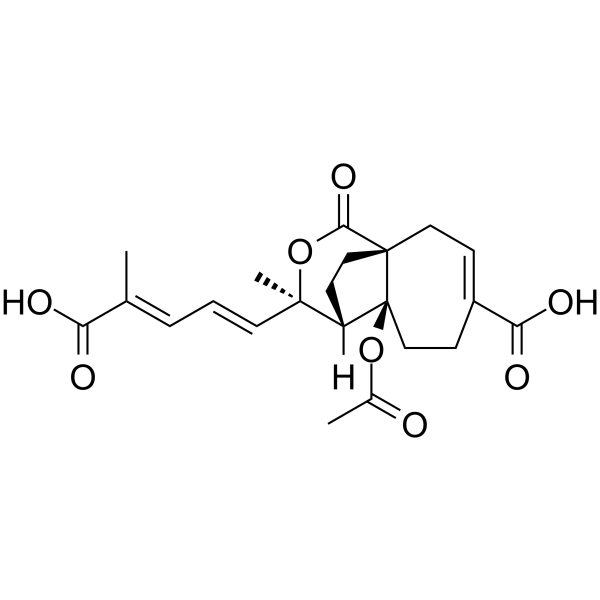
-
- HY-136450
-
|
TCBZ-SO
|
Parasite
BCRP
|
Infection
|
|
Triclabendazole sulfoxide (TCBZ-SO) is the main plasma metabolite of Triclabendazole, and exhibits anti-parasite effects. Triclabendazole sulfoxide can inhibit membrane transporter ABCG2/BCRP .
|
-

-
- HY-113113
-
|
13,14-Dihydroprostaglandin E1
|
Endogenous Metabolite
|
Metabolic Disease
|
|
13,14-Dihydro PGE1 is a metabolite of PGE1 (Prostaglandin E1) which inhibits the ADP-induced platelet aggregation (ID50 = 10.8 ng/mL platelet rich plasma) .
|
-
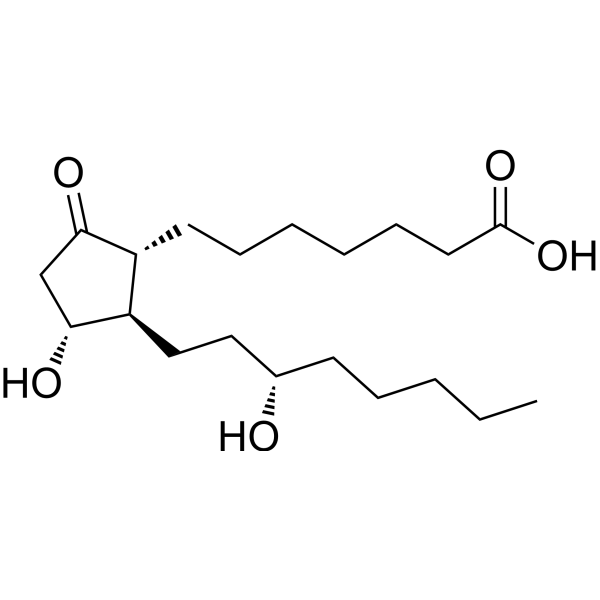
-
- HY-70002AS
-
|
N-desmethyl MDV 3100-d6
|
|
|
|
N-desmethyl Enzalutamide-d6 is a deuterium labeled N-desmethyl Enzalutamide. N-desmethyl Enzalutamide is an active metabolite of Enzalutamide. N-desmethyl Enzalutamide is the active metabolite of Enzalutamide. N-desmethyl Enzalutamide demonstrates primary and secondary pharmacodynamics of similar potency to Enzalutamide and circulates at approximately the same plasma concentrations as enzalutamide[1].
|
-
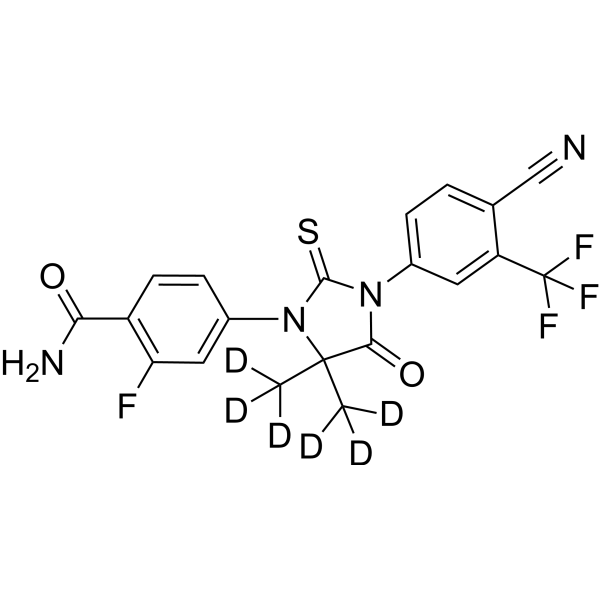
-
- HY-100064
-
|
|
|
|
|
O-Desmethyl gefitinib is an active metabolite of Gefitinib in human plasma. The formation of O-desmethyl gefitinib is dependent on CYP2D6 activity. O-desmethyl gefitinib inhibits EGFR with an IC50 of 36 nM in subcellular assays .
|
-
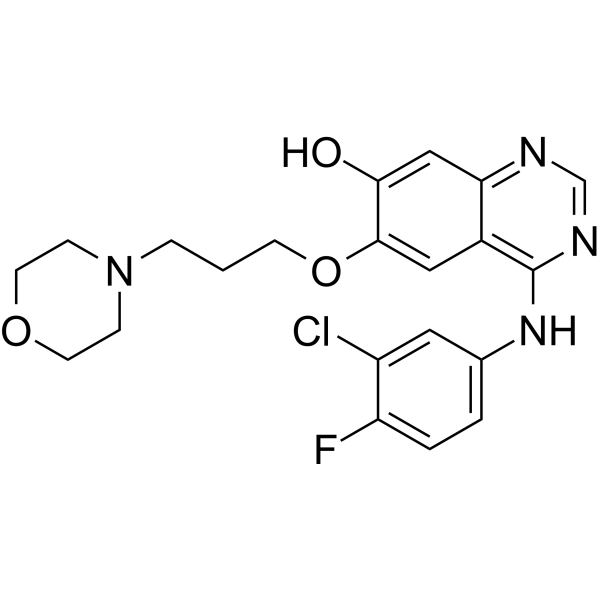
-
- HY-12388AR
-
|
Desmethylclomipramine hydrochloride (Standard)
|
Drug Metabolite
|
Neurological Disease
|
|
N-Desmethyl Clomipramine (hydrochloride) (Standard) is the analytical standard of N-Desmethyl Clomipramine (hydrochloride). This product is intended for research and analytical applications. N-Desmethyl Clomipramine hydrochloride (Desmethylclomipramine hydrochloride) is a primary plasma N-desmethyl metabolite of Clomipramine. Clomipramine is a tricyclic antidepressant .
|
-
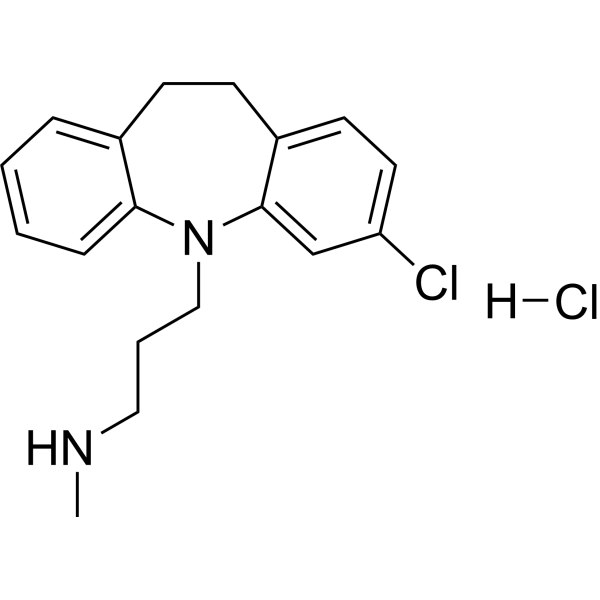
-
- HY-W017100
-
|
6-Methoxysalicylic acid
|
Others
|
Neurological Disease
|
|
2-Hydroxy-6-methoxybenzoic acid can be used for the determination of acetylsalicylic acid and its major metabolite, salicylic acid, in animal plasma. 2-Hydroxy-6-methoxybenzoic acid exhibits significant analgesic effects .
|
-
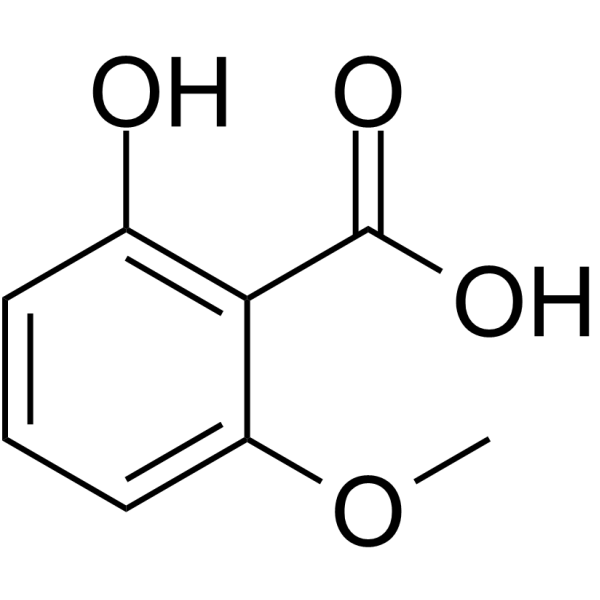
-
- HY-B0815S
-
|
|
Cholinesterase (ChE)
|
Neurological Disease
|
|
Chlorpyrifos-d10 is the deuterium labeled Chlorpyrifos. Chlorpyrifos is an organophosphate insecticide that is classified as a phosphorothionate. The oxon metabolite of Chlorpyrifos is an inhibitor of acetylcholinesterase (AChE), affecting neurological function in insects, humans, and other animals. The Chlorpyrifos oxon (CPO) metabolite is hydrolyzed by the plasma enzyme paraoxonase 1 (PON1), and susceptibility to neurotoxicity associated with CPO exposure is mitigated by PON1 overexpression.
|
-
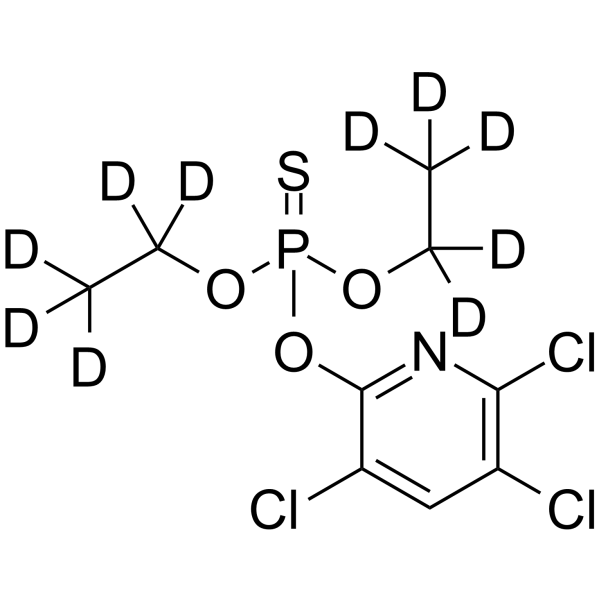
-
- HY-118283
-
|
AG1908
|
Proton Pump
|
Metabolic Disease
|
|
5-Hydroxylansoprazole (AG1908) is an active metabolite of Lansoprazole in plasma. Lansoprazole is metabolized by CYP2C19 forming 5-Hydroxylansoprazole. Lansoprazole is a gastric proton-pump inhibitor and is effective in the treatment of various peptic diseases .
|
-
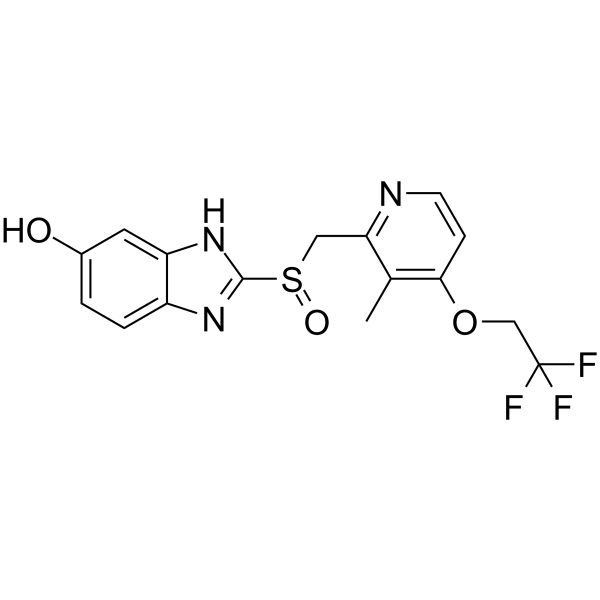
-
- HY-136450S
-
|
TCBZ-SO-d3
|
Isotope-Labeled Compounds
Parasite
BCRP
|
Infection
|
|
Triclabendazole sulfoxide-d3 is the deuterium labeled Triclabendazole sulfoxide. Triclabendazole sulfoxide (TCBZ-SO) is the main plasma metabolite of Triclabendazole, and exhibits anti-parasite effects. Triclabendazole sulfoxide can inhibit membrane transporter ABCG2/BCRP[1][2].
|
-

-
- HY-112948
-
|
|
Endogenous Metabolite
|
Metabolic Disease
|
|
2-Methylbutyrylcarnitine is a fatty acid metabolite. 2-Methylbutyrylcarnitine is found mainly in the blood and urine of humans and animals and is produced through the pyruvate carboxylation pathway. 2-Methylbutyrylcarnitine exhibits high level in the plasma of subjects with steatohepatitis (NASH) and can be used as an indicator for the diagnosis of metabolic diseases .
|
-
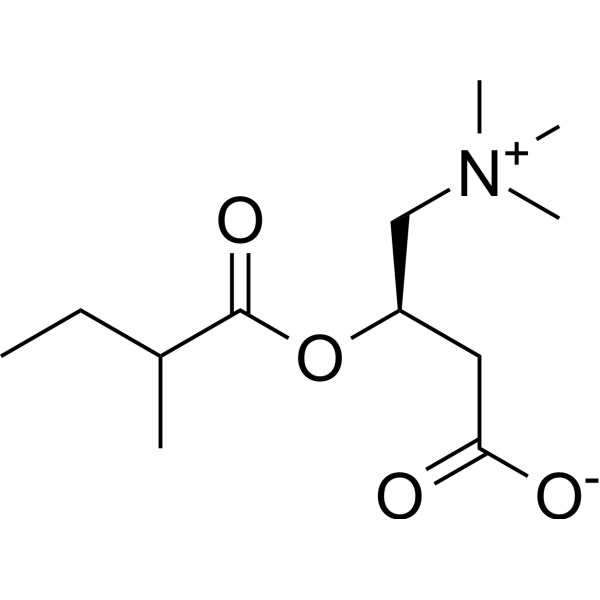
-
- HY-100064S
-
|
|
EGFR
|
Cancer
|
|
O-Desmethyl gefitinib-d8 is a deuterium labeled O-Desmethyl gefitinib. O-Desmethyl gefitinib is an active metabolite of Gefitinib in human plasma. The formation of O-desmethyl gefitinib is dependent on CYP2D6 activity. O-desmethyl gefitinib inhibits EGFR with an IC50 of 36 nM in subcellular assays[1][2].
|
-
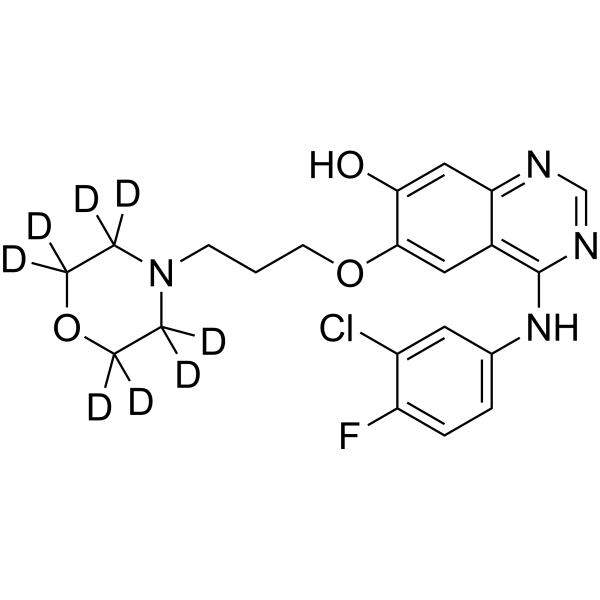
-
- HY-100064S1
-
|
|
Isotope-Labeled Compounds
EGFR
|
Cancer
|
|
O-Desmethyl gefitinib-d6 is the deuterium labeled O-Desmethyl gefitinib. O-Desmethyl gefitinib is an active metabolite of Gefitinib in human plasma. The formation of O-desmethyl gefitinib is dependent on CYP2D6 activity. O-desmethyl gefitinib inhibits EGFR with an IC50 of 36 nM in subcellular assays[1][2].
|
-
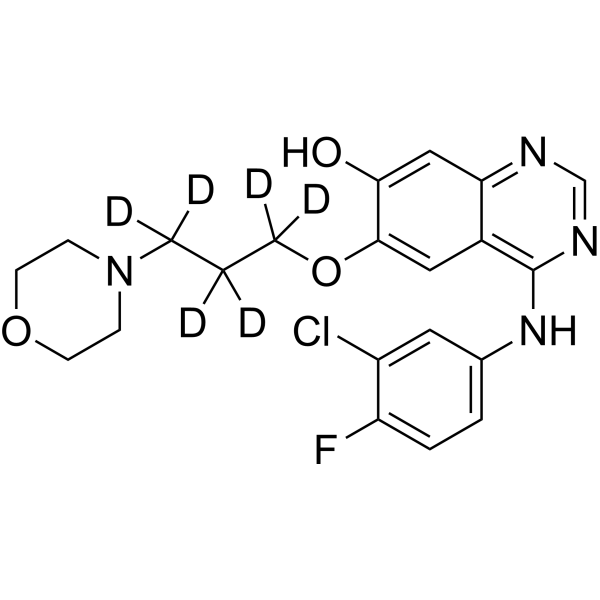
-
- HY-136450S1
-
|
TCBZ-SO-13C,d3
|
Isotope-Labeled Compounds
Parasite
BCRP
|
Infection
|
|
Triclabendazole sulfoxide- 13C,d3 is the 13C- and deuterium labeled Triclabendazole sulfoxide. Triclabendazole sulfoxide (TCBZ-SO) is the main plasma metabolite of Triclabendazole, and exhibits anti-parasite effects. Triclabendazole sulfoxide can inhibit membrane transporter ABCG2/BCRP[1][2].
|
-

-
- HY-137591
-
|
|
Others
|
Endocrinology
|
|
13,14-Dihydro-15-keto-PGE1 is an inactive metabolite of PGE1. 13, 14-Dihydro-15-Keto-pGE1 inhibited platelet aggregation in ADP-induced human isolated platelet-rich plasma with IC50 14.8 μg/mL .
|
-
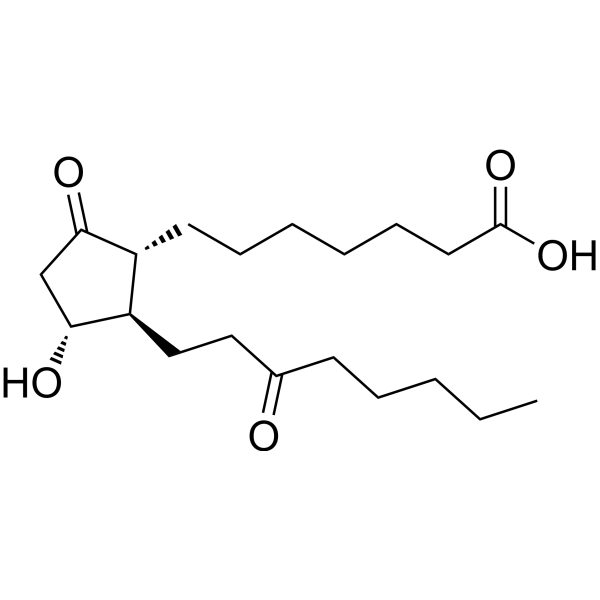
-
- HY-108263
-
|
CGP52421
|
FLT3
|
Cancer
|
|
3-Hydroxy Midostaurin (CGP 52421), a metabolite of PKC412, effectively inhibits FMS-like tyrosine kinase-3 (FLT3) autophosphorylation with IC50s of approximately 132 nM and 9.8 μM in culture medium and plasma, respectively. 3-Hydroxy Midostaurin is less selective but more cytotoxic than PKC412 .
|
-
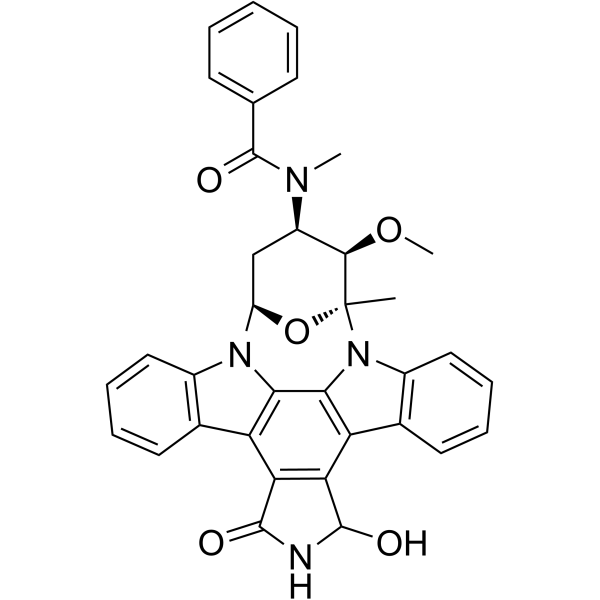
-
- HY-108263S
-
|
CGP52421-d5
|
Isotope-Labeled Compounds
FLT3
|
Cancer
|
|
3-Hydroxy Midostaurin-d5 is a deuterium labeled 3-Hydroxy Midostaurin. 3-Hydroxy Midostaurin is a metabolite of PKC412, which effectively inhibits FMS-like tyrosine kinase-3 (FLT3) autophosphorylation with IC50s of approximately 132 nM and 9.8 μM in culture medium and plasma, respectively[1].
|
-

-
- HY-N6720
-
|
|
Endogenous Metabolite
|
Metabolic Disease
|
|
T-2 Triol is a trichothecene mycotoxin derived by the metabolism of T-2 toxin. It is less toxic than T-2 toxin . T-2 Triol major metabolites are evaluated in broiler chickens with Half-lives (t1/2λz), Peak plasma concentrations (Cmax) and Tmax values of 9.6 mins, 563 ng/ml , 2.5 mins, respectively .
|
-
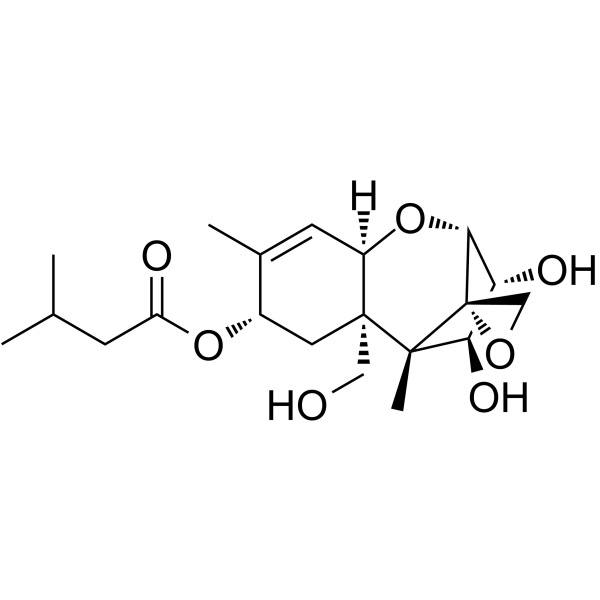
-
- HY-135331
-
|
|
Androgen Receptor
Cytochrome P450
|
Cancer
|
|
N-Desmethyl Apalutamide is an active metabolite of Apalutamide. N-Desmethyl Apalutamide is a less potent antagonist of the androgen receptor and is responsible for one-third of the activity of Apalutamide. The formation of N-Desmethyl Apalutamide mediated predominantly by CYP2C8 and CYP3A4. N-Desmethyl Apalutamide is moderate to strong CYP3A4 and CYP2B6 inducer and has an excellent plasma-proteins bound concentration .
|
-
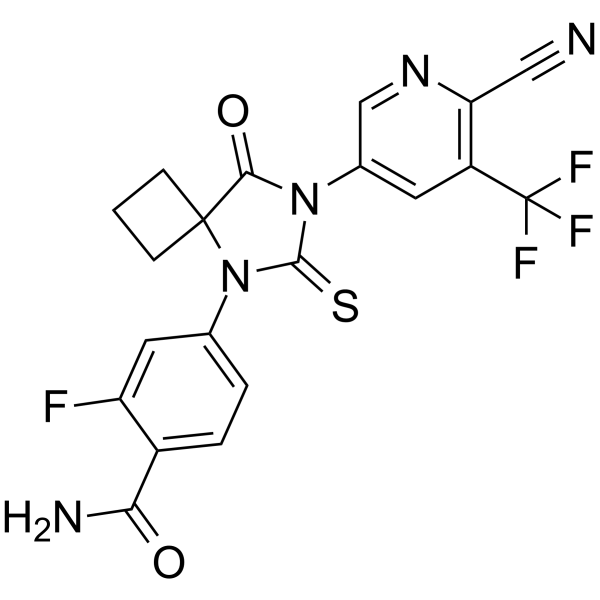
-
- HY-12765
-
|
E-3174; EXP-3174
|
Angiotensin Receptor
|
Cardiovascular Disease
|
|
Losartan Carboxylic Acid (E-3174), an active carboxylic acid metabolite of Losartan, is an angiotensin II receptor type 1 (AT1) antagonist. The Ki values are 0.97, 0.57, 0.67 nM for rat AT1B/AT1A and human AT1, respectively. Losartan Carboxylic Acid blocks the angiotensin II-induced responses in vascular smoothmuscle cells (VSMC). Losartan Carboxylic Acid elevates plasma renin activities and reduces mean arterial pressure .
|
-
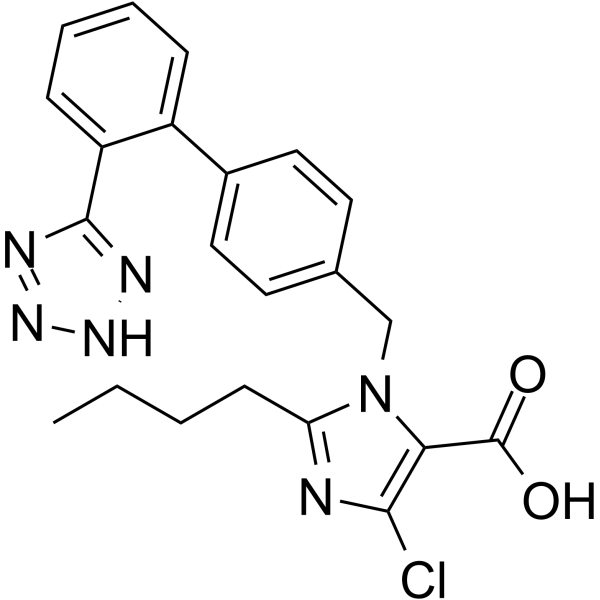
-
- HY-W754151
-
|
|
Isotope-Labeled Compounds
|
Others
|
|
N-Desmethyl apalutamide-d4 is the deuterium-labeled N-Desmethyl-Apalutamide (HY-135331). N-Desmethyl Apalutamide is an active metabolite of Apalutamide. N-Desmethyl Apalutamide is a less potent antagonist of the androgen receptor and is responsible for one-third of the activity of Apalutamide. The formation of N-Desmethyl Apalutamide mediated predominantly by CYP2C8 and CYP3A4. N-Desmethyl Apalutamide is moderate to strong CYP3A4 and CYP2B6 inducer and has an excellent plasma-proteins bound concentration .
|
-
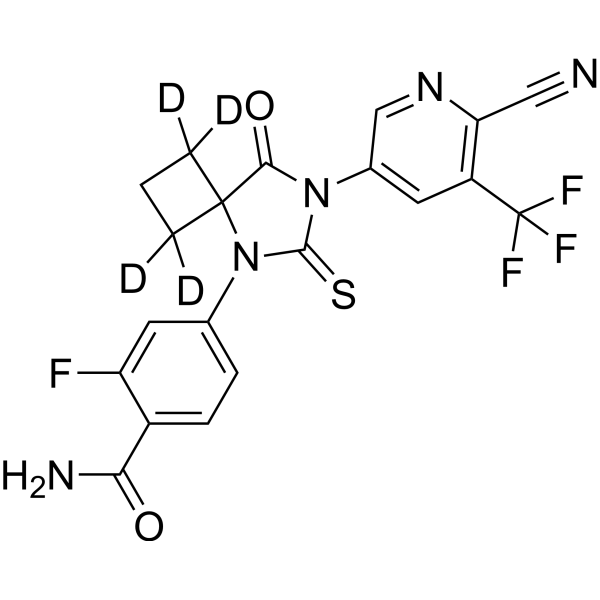
-
- HY-12765S1
-
|
|
Isotope-Labeled Compounds
Angiotensin Receptor
|
Cardiovascular Disease
|
|
Losartan carboxylic acid-d4 (hydrochloride) is deuterium labeled Losartan Carboxylic Acid. Losartan Carboxylic Acid (E-3174), an active carboxylic acid metabolite of Losartan, is an angiotensin II receptor type 1 (AT1) antagonist. The Ki values are 0.97, 0.57, 0.67 nM for rat AT1B/AT1A and human AT1, respectively. Losartan Carboxylic Acid blocks the angiotensin II-induced responses in vascular smoothmuscle cells (VSMC). Losartan Carboxylic Acid elevates plasma renin activities and reduces mean arterial pressure[1][2][3][4].
|
-
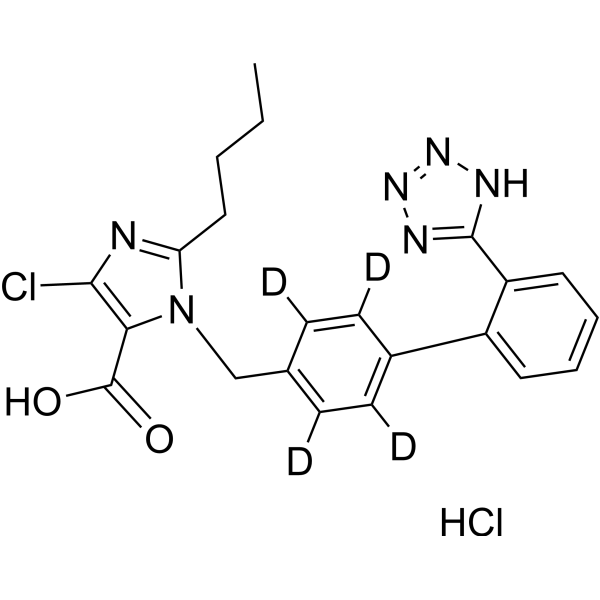
| Cat. No. |
Product Name |
Category |
Target |
Chemical Structure |
| Cat. No. |
Product Name |
Chemical Structure |
-
- HY-12388AS
-
|
|
|
N-Desmethyl Clomipramine-d3 (hydrochloride) is the deuterium labeled N-Desmethyl Clomipramine. N-Desmethyl Clomipramine hydrochloride (Desmethylclomipramine hydrochloride) is a primary plasma N-desmethyl metabolite of Clomipramine[1]
|
-

-
- HY-B0815S
-
|
|
|
Chlorpyrifos-d10 is the deuterium labeled Chlorpyrifos. Chlorpyrifos is an organophosphate insecticide that is classified as a phosphorothionate. The oxon metabolite of Chlorpyrifos is an inhibitor of acetylcholinesterase (AChE), affecting neurological function in insects, humans, and other animals. The Chlorpyrifos oxon (CPO) metabolite is hydrolyzed by the plasma enzyme paraoxonase 1 (PON1), and susceptibility to neurotoxicity associated with CPO exposure is mitigated by PON1 overexpression.
|
-

-
- HY-100064S
-
|
|
|
O-Desmethyl gefitinib-d8 is a deuterium labeled O-Desmethyl gefitinib. O-Desmethyl gefitinib is an active metabolite of Gefitinib in human plasma. The formation of O-desmethyl gefitinib is dependent on CYP2D6 activity. O-desmethyl gefitinib inhibits EGFR with an IC50 of 36 nM in subcellular assays[1][2].
|
-

-
- HY-113161S
-
|
|
|
L-Octanoylcarnitine-d3 is the deuterium-labeled L-Octanoylcarnitine (HY-113161). L-Octanoylcarnitine-d3 is a plasma metabolite and a physiologically active form of octanoylcarnitine. L-Octanoylcarnitine-d3 can be used for the research of breast cancer .
|
-

-
- HY-136450S
-
|
|
|
Triclabendazole sulfoxide-d3 is the deuterium labeled Triclabendazole sulfoxide. Triclabendazole sulfoxide (TCBZ-SO) is the main plasma metabolite of Triclabendazole, and exhibits anti-parasite effects. Triclabendazole sulfoxide can inhibit membrane transporter ABCG2/BCRP[1][2].
|
-

-
- HY-100064S1
-
|
|
|
O-Desmethyl gefitinib-d6 is the deuterium labeled O-Desmethyl gefitinib. O-Desmethyl gefitinib is an active metabolite of Gefitinib in human plasma. The formation of O-desmethyl gefitinib is dependent on CYP2D6 activity. O-desmethyl gefitinib inhibits EGFR with an IC50 of 36 nM in subcellular assays[1][2].
|
-

-
- HY-136450S1
-
|
|
|
Triclabendazole sulfoxide- 13C,d3 is the 13C- and deuterium labeled Triclabendazole sulfoxide. Triclabendazole sulfoxide (TCBZ-SO) is the main plasma metabolite of Triclabendazole, and exhibits anti-parasite effects. Triclabendazole sulfoxide can inhibit membrane transporter ABCG2/BCRP[1][2].
|
-

-
- HY-108263S
-
|
|
|
3-Hydroxy Midostaurin-d5 is a deuterium labeled 3-Hydroxy Midostaurin. 3-Hydroxy Midostaurin is a metabolite of PKC412, which effectively inhibits FMS-like tyrosine kinase-3 (FLT3) autophosphorylation with IC50s of approximately 132 nM and 9.8 μM in culture medium and plasma, respectively[1].
|
-

-
- HY-W754151
-
|
|
|
N-Desmethyl apalutamide-d4 is the deuterium-labeled N-Desmethyl-Apalutamide (HY-135331). N-Desmethyl Apalutamide is an active metabolite of Apalutamide. N-Desmethyl Apalutamide is a less potent antagonist of the androgen receptor and is responsible for one-third of the activity of Apalutamide. The formation of N-Desmethyl Apalutamide mediated predominantly by CYP2C8 and CYP3A4. N-Desmethyl Apalutamide is moderate to strong CYP3A4 and CYP2B6 inducer and has an excellent plasma-proteins bound concentration .
|
-

-
- HY-12765S1
-
|
|
|
Losartan carboxylic acid-d4 (hydrochloride) is deuterium labeled Losartan Carboxylic Acid. Losartan Carboxylic Acid (E-3174), an active carboxylic acid metabolite of Losartan, is an angiotensin II receptor type 1 (AT1) antagonist. The Ki values are 0.97, 0.57, 0.67 nM for rat AT1B/AT1A and human AT1, respectively. Losartan Carboxylic Acid blocks the angiotensin II-induced responses in vascular smoothmuscle cells (VSMC). Losartan Carboxylic Acid elevates plasma renin activities and reduces mean arterial pressure[1][2][3][4].
|
-

Your information is safe with us. * Required Fields.
Inquiry Information
- Product Name:
- Cat. No.:
- Quantity:
- MCE Japan Authorized Agent:


















































